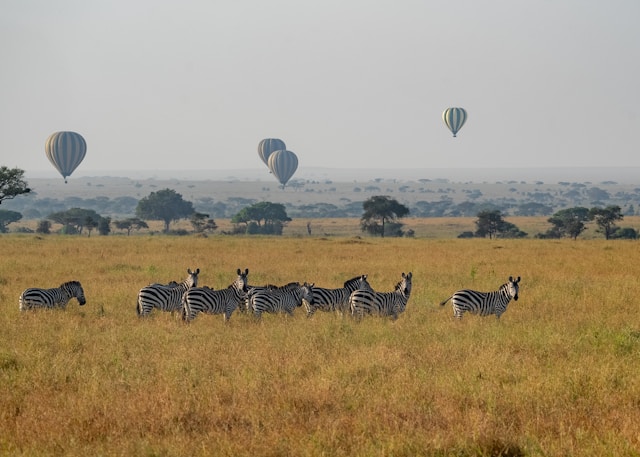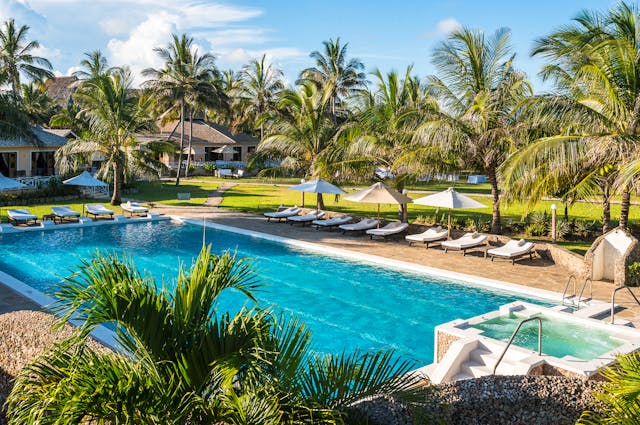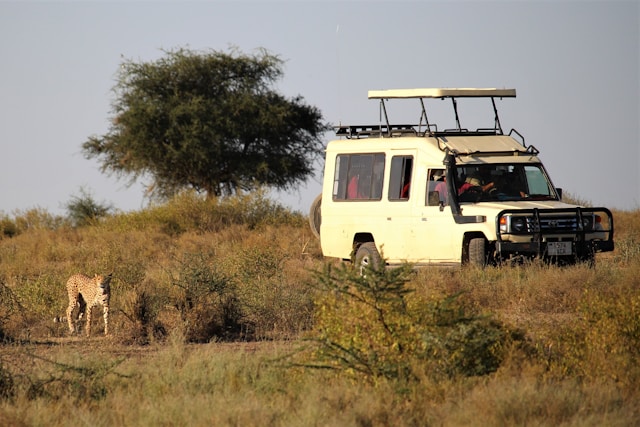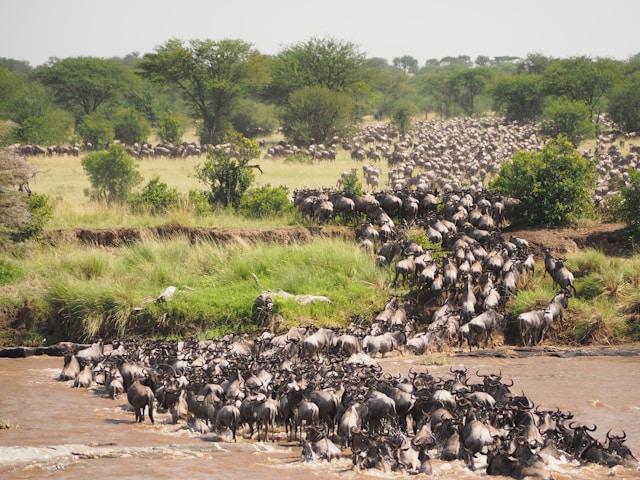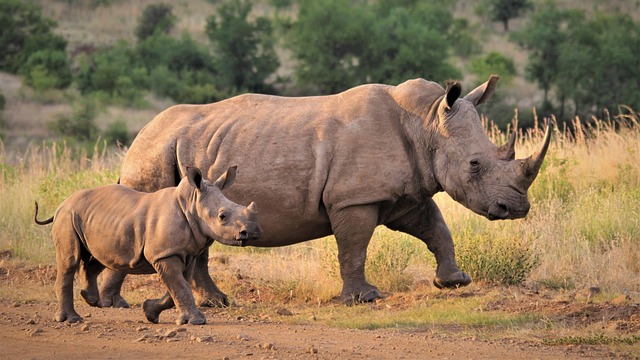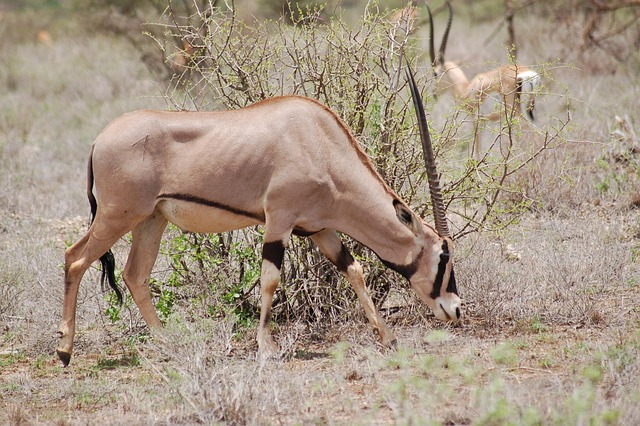Ultimate Guide to Tanzania All-Inclusive Tours (2026 / 2027 / 2028)
Planning a truly all-inclusive tour of Tanzania—with zero surprises—can feel overwhelming. That’s why we created this definitive guide: you’ll find realistic cost breakdowns, sample itineraries, what “all-inclusive” really means, how to choose the best package, booking tips, what to pack, and more. Whether you travel in 2026, 2027, or 2028, this guide ensures your Tanzania all-inclusive tour is seamless, unforgettable, and truly worry-free.
Quick Answers
-
What is a Tanzania all-inclusive tour? A packaged tour where accommodation, meals, internal transfers, park fees, and many activities are included in one upfront price.
-
Typical cost (2026–2028): USD $300–$600 per person per day (depending on comfort, route, season).
-
Best times to travel: June–October (dry season), December–March (short rains).
-
Suggested itinerary: 7–14 days in Northern circuit (Arusha → Tarangire → Serengeti → Ngorongoro) + optional Zanzibar extension.
- Why Choose Paradise Africa Safari
What Does “All-Inclusive” Mean in Tanzania Tours?
When you see “all-inclusive Tanzania tour,” it generally means that most major travel components are bundled:
-
Accommodation (lodges, tented camps, hotels)
-
All meals (breakfast, lunch, dinner)
-
Park entry fees and conservation fees
-
Game drives / safari activities
-
Internal transfers and road transport
-
Some domestic flights (depending on tour)
-
Drinking water, local taxes
-
Often guided services and local support
However, it does not always include:
-
International flights
-
Visa costs
-
Travel insurance
-
Tips / gratuities
-
Optional excursions (balloon safari, cultural tours)
-
Additional drinks, premium services.
Why Opt for an All-Inclusive Tour?
That’s why so many travelers choose a fully guided, pre-planned experience with a reputable operator. Why choose Paradise Africa Safari is a great place to start understanding what makes our itineraries different…”Choosing a fully inclusive package brings a range of benefits:
-
Budget certainty — no surprise add-ons
-
Convenience & ease — one provider handles everything
-
Better logistics & connectivity — internal transfers, flights, camps all coordinated
-
Professional guides & quality assurance — local experts behind the scenes
-
Better value — operators often negotiate better deals with camps, reducing cost per service
For many travellers, the added peace of mind is worth the premium.
Best Time to Travel & Wildlife Seasons
Dry Season (June – October)
-
Best visibility, wildlife congregates by water sources
-
Easier road conditions
-
Peak season with higher rates
Short Rains & Migration Season (December – March)
-
Lush landscapes, baby animals (especially in southern Serengeti / Ndutu)
-
Fewer tourists
-
Some roads may be muddy, but many all-inclusive operators plan accordingly
Shoulder / Green Season (May, November)
-
Lower rates, beautiful scenery
-
Some camps may close, and access might be limited
Migration timing note: The Great Migration moves through southern Serengeti in Jan–Mar, then northwards by June–July. Plan your itinerary regionally for best sightings. (See also migration guides on Serengeti websites.)
Tanzania Regions & Circuits for All-Inclusive Tours
Northern Circuit (classic & most common)
-
Arusha (gateway)
-
Tarangire National Park — elephants, baobabs
-
Lake Manyara — flamingos, tree-climbing lions
-
Ngorongoro Crater — dense wildlife in enclosed crater
-
Serengeti — where the action is, Great Migration
Southern & Off-Path Extensions
-
Ruaha National Park — wild, remote, fewer crowds
-
Nyerere (Selous) — vast, river-based safaris
-
Katavi / Mahale — for more remote wilderness and chimp trekking
-
Zanzibar (for beach extension) — for rest, snorkeling, culture
An all-inclusive tour might combine Northern + Zanzibar or Northern + Southern for a richer experience.
For updated park fees, regulations, or to check seasonal accessibility, you can visit the Tanzania National Parks official website.”
Sample Itineraries (All‑Inclusive Tours)
7-Day All-Inclusive Northern Circuit (no Zanzibar)
| Day | Activity / Route |
|---|---|
| Day 1 | Arrival in Kilimanjaro / Arusha, overnight in lodge |
| Day 2 | Tarangire game drive, overnight in camp |
| Day 3 | Lake Manyara + cultural visit |
| Day 4 | Ngorongoro Crater full day |
| Day 5 | Transfer to Serengeti, evening game drive |
| Day 6 | Full day in Serengeti |
| Day 7 | Return to Arusha, depart |
10-Day Tour + Zanzibar Beach Extension
Our 10-Day Great Migration package includes 3 nights in central Serengeti—timed perfectly for calving or river crossings depending on the season. You can learn more on our Tanzania safari migration blog, where we track movement patterns in real-time.”
14-Day Grand Inclusive Tour
Northern → Southern extension (Ruaha / Nyerere) → Zanzibar. You’ll see more variety, but travel logistics are heavier.
You can link to your in-house Tanzania all-inclusive tour packages pages, e.g. “View our 10-day all-inclusive Tanzania tour here” (internal link) and “Check our Zanzibar extension option”.
Cost Breakdown & What Influences Price
Approximate Price Range (2026–2028 Estimate)
-
USD $300 – $600 per person per day (all-inclusive standard)
-
Luxury or ultra-luxury might go higher
What Affects the Price
-
Lodge / Camp quality (mid-tier vs deluxe)
-
Season / demand
-
Route length & number of parks
-
Domestic flights vs road transfers
-
Group size / private vs small group
-
Extra inclusions (spa, balloon rides, cultural tours)
Example Cost Breakdown for 10-Day Tour
| Item | Portion of Cost |
|---|---|
| Lodging + meals | ~ 30–40% |
| Park & conservation fees | ~ 25–35% |
| Transport and internal flights | ~ 10–20% |
| Guide & vehicle | ~ 10–15% |
| Miscellaneous / buffer / taxes | ~ 5–10% |
Showing this breakdown builds transparency and trust.
What Is Included vs Excluded (All-Inclusive Clarity)
Usually Included
-
All nights lodging (camps, lodges, hotels)
-
All meals (breakfast, lunch, dinner)
-
Park & conservation fees
-
Game drives and safari activities as per itinerary
-
Transfers between camps, road transport
-
Drinking water, local taxes, service charges
-
Local guides, support staff, operations
Common Exclusions
-
International & regional flights
-
Visa / entry fees
-
Travel / medical insurance
-
Tips / gratuities
-
Alcohol, premium beverages
-
Optional add-ons (balloon rides, extra excursions)
-
Personal expenses (laundry, souvenirs)
Make sure you clearly define what your “all-inclusive” package does not include to avoid misunderstanding.
Choosing Lodges, Camps & All‑Inclusive Packages
What to Look for in a Quality All-Inclusive Package
-
High-quality, well-reviewed lodgings
-
Good location (inside or close to reserves)
-
Responsible, eco-friendly operations
-
Clear “inclusion / exclusion” breakdown
-
Flexible cancel / change policy
-
Strong reviews and photos
Tips for Package Choices
-
Don’t just compare price; compare what is included
-
Ask for real itineraries and day-by-day cost breakdowns
-
Prefer operators with local offices, good reviews, known reputation
-
Look for testimonials or case studies
-
Request backup plans (e.g. road closures, flight delays)
Link internally to your “Why choose us” or “About Us / Credentials” pages to build trust.
Booking Tips & How to Avoid Hidden Fees
-
Request itemized quotes
-
Confirm all transfers, pickup/dropoff arrangements
-
Check if parks / camps may increase rates — ask for fixed pricing
-
Understand refund / cancellation policies
-
Ask about upgrade options
-
Negotiate (within reason) for add-ons
-
Always use a reputable operator with good reviews
You can link externally to authoritative guides like Tanzania National Parks (TANAPA) or Tanzania Tourism Board as reference.
Travel Logistics & Internal Transport
Entry & Arrival
-
Common international entry: Kilimanjaro International (JRO), Dar es Salaam
-
Visa: Many nationalities need Tanzania E-Visa
-
Airport transfers included in most all-inclusive tours
Internal Transfers & Flights
-
Overland vs charter flights: pick based on your budget & comfort
-
Some routes require small-plane hop between camps
-
Buffer time: allow extra time between flights in your itinerary
Weather & Road Conditions
-
In rainy periods, some roads may be muddy or impassable
-
Good all-inclusive operators plan around weather contingencies
What to Pack & Health Tips
Packing Essentials
-
Lightweight, neutral safari clothing
-
Long sleeves and pants for evenings
-
Hat, sunglasses, buff / scarf
-
Sturdy walking shoes / boots
-
Rain jacket especially for rainy months
-
Binoculars, camera, memory cards, batteries
-
Sunscreen, insect repellent
-
First aid kit, medications
-
Travel adapter
Health & Safety Advice
-
Malaria prophylaxis recommended
-
Vaccinations: Yellow Fever (if required), routine ones
-
Travel insurance required
-
Listen to your guide about wildlife safety
-
Avoid walking near wildlife without guide
-
Respect local culture and customs
Wildlife Highlights & What to Expect
-
Big Five: lion, elephant, leopard, buffalo, rhino
-
Migration & calving (zebra, wildebeest)
-
Predator encounters: cheetahs, wild dogs, hyenas
-
Birdlife: hundreds of species
-
Scenic landscapes: kopjes, plains, crater, woodlands
-
Unique phenomena: tree-lions (in some forests), hippo pools, river crossings
Paint vivid imagery to engage users and help them visualize the experience.
Safety, Permits & Local Culture
-
Tanzania is generally safe for tourists / well traveled
-
Use reputable operators with safety protocols
-
Permits / park rules: follow strictly
-
Respect local tribes (Maasai, Hadzabe, Chaga) — guide will brief
-
Tips on interacting respectfully
FAQs
Q: How much does an all-inclusive tour to Tanzania cost in 2026?
A: Expect USD $300–$600 per person per day depending on route, comfort, season, and inclusions.
Q: What exactly does “all-inclusive” cover?
A: It generally covers lodging, meals, park fees, game drives, internal transfers—but not international flights, visas, tips, or optional add-ons.
Q: Which months are best for all-inclusive Tanzania tours?
A: June–October (dry season) and December–March (short rains) are prime months for wildlife viewing.
Q: Can I extend an all-inclusive tour to Zanzibar?
A: Yes, many packages offer a beach extension to Zanzibar with all-inclusive arrangements for that segment.
Q: Is Tanzania safe for all-inclusive tourists?
A: Yes, especially when traveling with licensed operators. Standard safety practices and guidance apply.
We invite you to plan ahead with confidence. To discover more about Tanzania’s tourism policies, safety, and travel visa requirements, visit the Tanzania Tourism Board website
Ready to Book your Tour
Ready to book your Tanzania all-inclusive adventure? Contact us for a personalised quote, and let our expert guides craft the perfect, worry-free itinerary for 2026 / 2027 / 2028.

